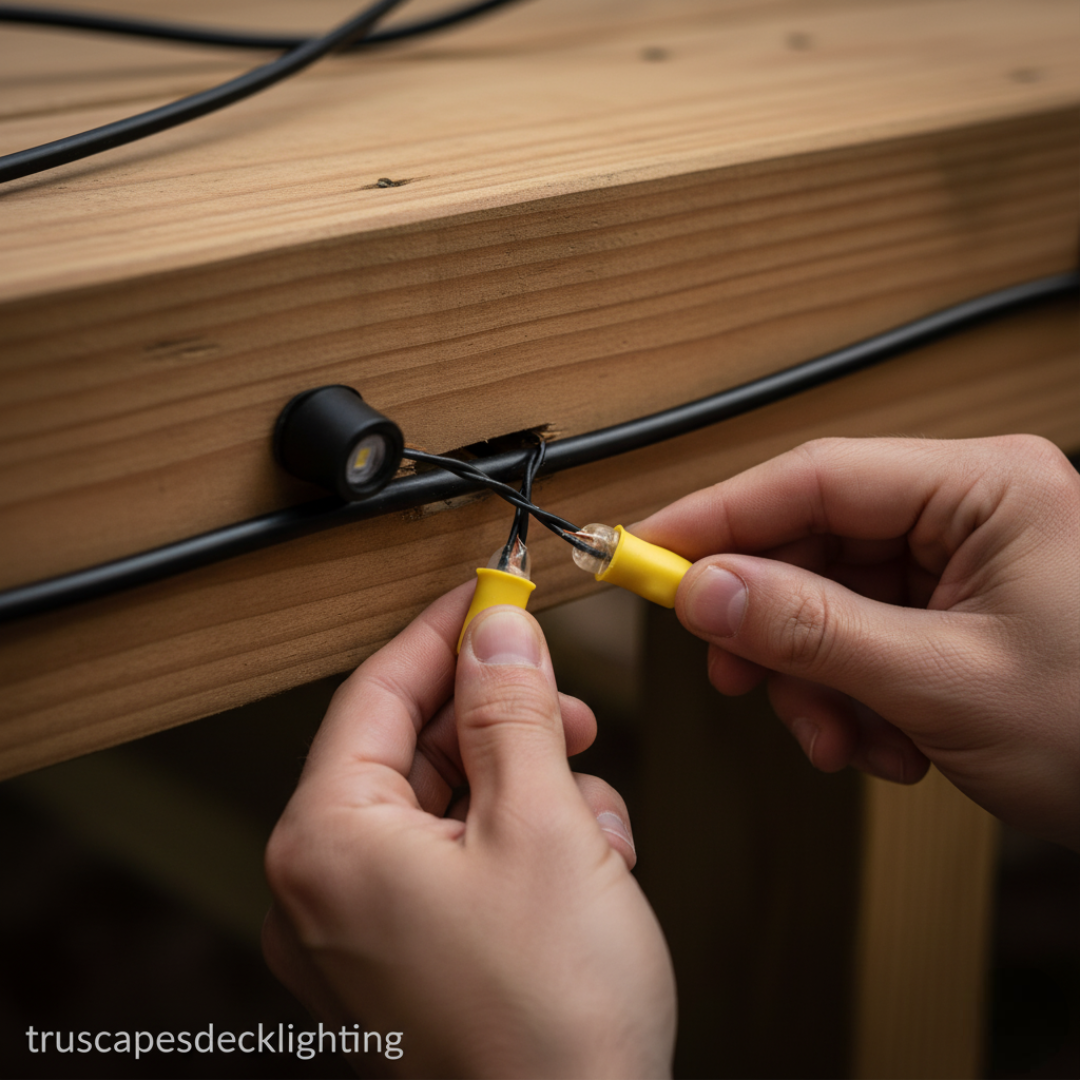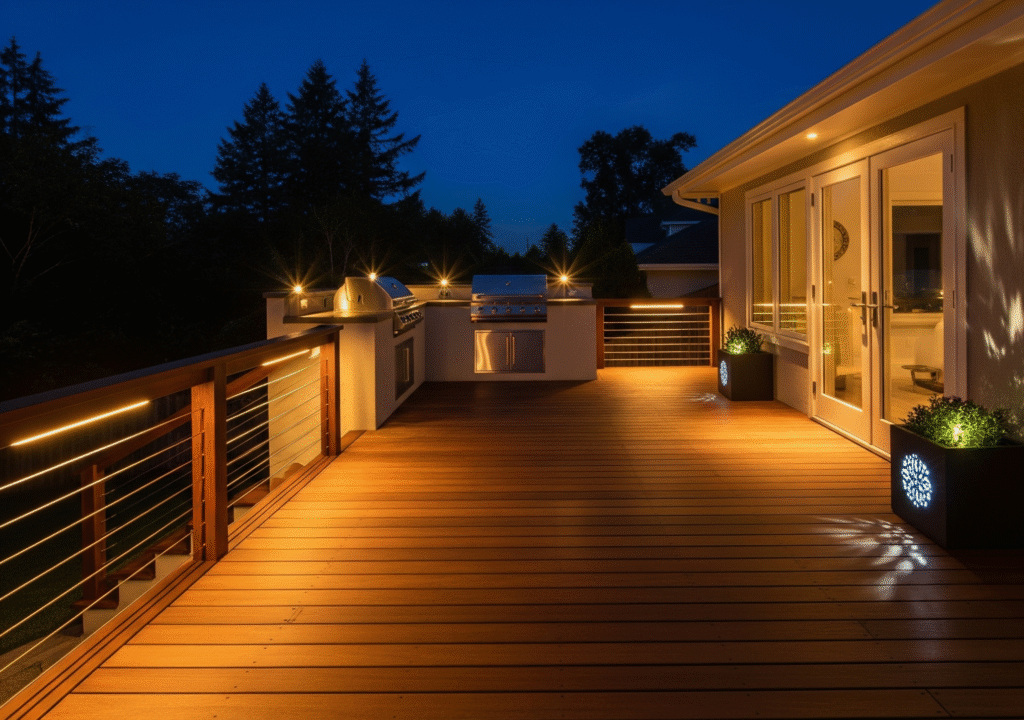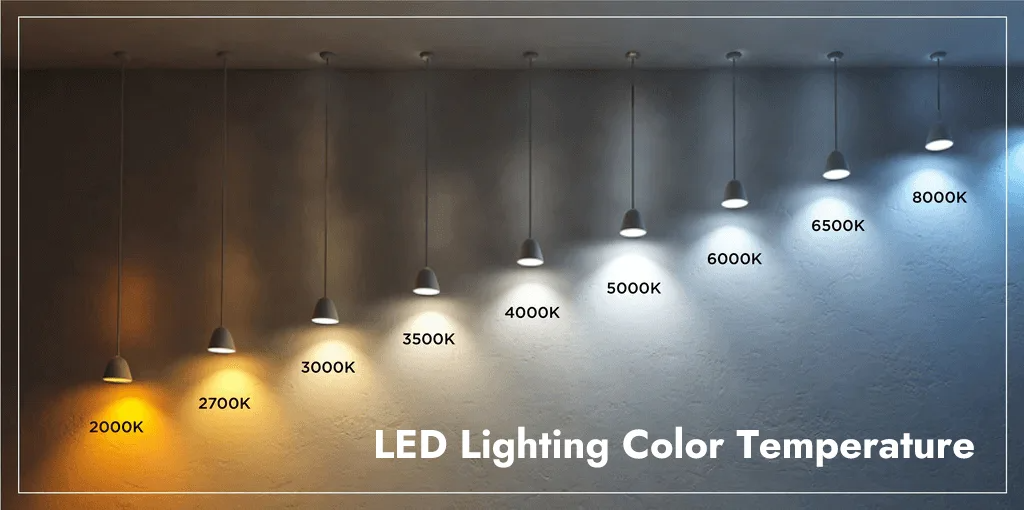
- FREE Shipping on all orders! Limited time!
- support@tru-scapes.com
Your deck is more than just wood and railings; it’s the backdrop for your life’s best moments. It’s where you host lively summer barbecues, enjoy quiet morning coffees, and unwind with a glass of wine under the stars. But as the sun sets, the magic of your outdoor space can fade into darkness. The right deck lighting doesn’t just illuminate; it transforms. It sets the scene, creates an atmosphere, and turns a simple evening into a memorable experience.

Many homeowners focus on the placement of fixtures, but the secret to truly masterful deck lighting design lies in a less-discussed element: color temperature. Get it right, and you create the perfect ambiance. Get it wrong, and your cozy retreat can feel more like a stadium parking lot.
This guide will walk you through everything you need to know about choosing the perfect color temperature for your deck lighting. You’ll learn how this simple choice can dramatically impact the look and feel of your outdoor living space, making it safer, more inviting, and uniquely yours.
Before we dive into design, let’s clarify what we mean by “color temperature.” It has nothing to do with how hot a light bulb gets. Instead, color temperature describes the appearance of the light itself—ranging from a warm, golden glow to a cool, crisp white.
This is measured on the Kelvin scale, abbreviated as “K”. The lower the Kelvin number, the warmer and more yellow the light. The higher the Kelvin number, the cooler and bluer the light. For deck lighting, you’ll typically be working within a range of 2200K to 4000K.
Think about the light from a candle or a fireplace. That’s a very warm light, sitting at the low end of the scale (around 1900K). Now, think of the bright, clean light of midday sun; that’s much cooler. Understanding this spectrum is the first step to becoming the master of your deck’s mood.
The color of light has a powerful, often subconscious, effect on our feelings and energy levels. It’s a concept that interior designers and architects have used for decades, and it applies just as strongly to your outdoor space.
Warm Light (2200K – 3000K): Cozy and Inviting
Warm-toned lighting is the champion of relaxation. Its soft, amber, and golden hues mimic the light of a sunset or a flickering fire. This triggers a natural sense of calm and comfort in our brains.
When to Use Warm Light:
Cool Light (3500K – 4000K): Crisp and Modern
Cooler light is energetic and clear. It’s closer to natural daylight, which can make a space feel more open and modern. While it can be stark if overused, it has specific applications where it truly shines.
When to Use Cool Light:
Here’s a simple breakdown to help you visualize the best fit for your deck:
| Color Temperature (Kelvin) | Mood & Feeling | Best For… | Complements… |
| 2200K – 2700K (Warm White) | Cozy, Intimate, Relaxing | Seating areas, dining spaces, general ambiance. | Natural wood, stone, warm-toned décor. |
| 3000K (Soft White) | Friendly, Inviting, Balanced | A versatile choice for most deck applications. | A wide range of materials and architectural styles. |
| 3500K – 4000K (Cool White) | Bright, Crisp, Modern | Task lighting (grills), stairs, security lighting. | Modern architecture, metal accents, cool color palettes. |
You don’t have to choose just one! The most effective and beautiful deck lighting designs often use a layering technique, combining different types of light to create depth, interest, and functionality. This is where you can truly customize the feel of your space.
The key is to use different color temperatures for different purposes.
By layering light this way, you create a dynamic and functional environment. Your seating areas remain warm and inviting, while your functional zones are safe and well-lit.

We hear a lot of the same questions from homeowners starting their deck lighting journey. Let’s tackle them head-on.
Can I mix different color temperatures?
Absolutely! As we discussed in the layering section, mixing color temperatures is what the pros do. Just be strategic. Use warm light for ambiance and cool light for specific tasks. Avoid placing a warm and a cool light right next to each other pointing at the same spot, as this can look jarring.
What is the best color temperature for deck stairs?
For stairs, safety is paramount. We recommend a color temperature between 3000K and 3500K. This provides clear, crisp light to ensure every step is visible without being harsh or blinding. Riser lights or lights integrated into the handrail are excellent options.
Should my deck lighting match my house’s exterior lighting?
For a cohesive look, it’s a great idea to match or complement the color temperature of your existing exterior lights. If your porch lights are a warm 2700K, using a similar temperature for your deck’s ambient lighting will create a seamless transition from one space to the other.
How do I choose the right fixtures?
At Truscapes, we specialize in high-quality, low-voltage LED lighting systems. These are energy-efficient, long-lasting, and designed to withstand the elements. From recessed stair lights to elegant post cap fixtures, we can help you select the perfect hardware to bring your design to life. We focus on durable, professionally installed systems that provide consistent color and performance for years to come.
The power to create the perfect outdoor atmosphere is literally at your fingertips. By understanding and utilizing color temperature, you can design a deck lighting scheme that is not only beautiful and functional but also deeply personal. You can craft a vibrant space for entertaining, a tranquil oasis for relaxation, or a perfect balance of both.
Start by thinking about how you use your deck most often. Are you a weekend entertainer or a quiet evening lounger? Let the function of your space guide your initial lighting choices. From there, you can layer in task and accent lighting to add that professional touch.
Don’t let your beautiful deck disappear when the sun goes down. With a thoughtful lighting plan, you can extend your living space, enhance its beauty, and create the perfect mood for any occasion.
Ready to transform your deck? Share your biggest lighting challenges or your favorite design ideas in the comments below! We’d love to help you create the outdoor space of your dreams.

A beautiful deck is the heart of your outdoor living space, but as the sun sets, does it simply fade

Your deck is more than just a collection of wooden planks; it’s an extension of your home. It’s the stage